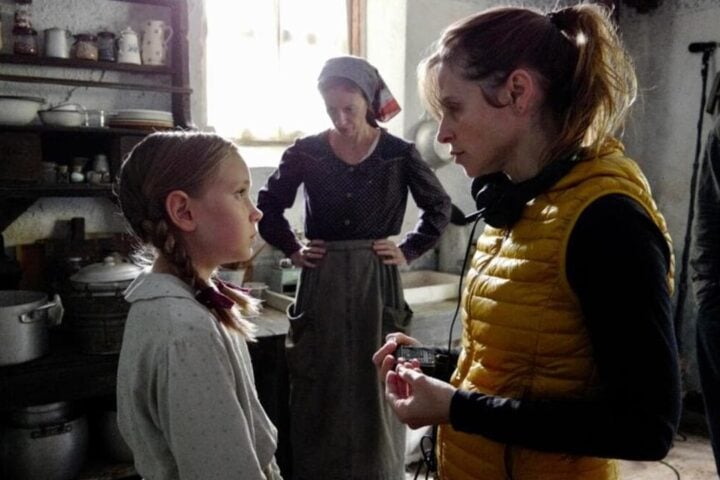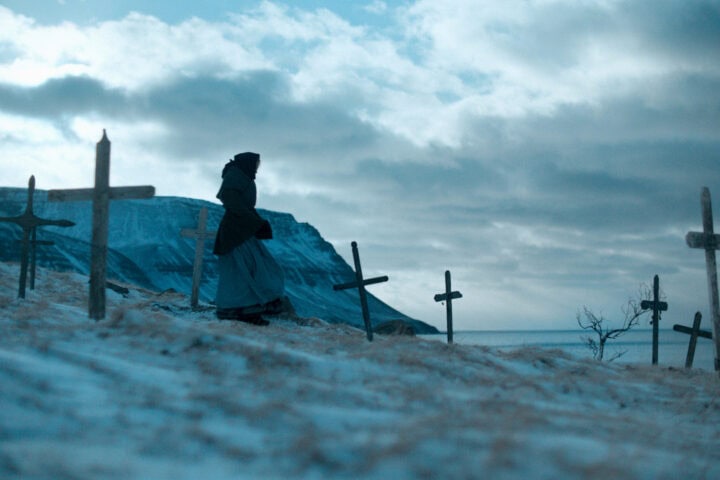Neither Israel nor Hamas is referenced by name in From Ground Zero, an anti-war collage film conceived, produced, and curated by Palestinian filmmaker Rashid Masharawi. Its voices and images belong solely to the citizens of Gaza affected by those warring ethnonational entities’ choices. Throughout the 22 shorts that comprise the film, the roar of war planes and drones is near-constant, the percussion of semi-distant explosions and gunfire arrhythmic, yet those who document their daily reality in a humanitarian crisis zone—many of whom recall the 2014 Gaza War, the most devastating event in the strip prior to 2023—struggle only to preserve what familiar beats they can of their lives from before this latest onslaught.
The styles and technologies employed by the different directors are variable: Footage was shot on both handheld cameras and smartphones, and many of the shorts weave fluidly between documentary, drama, and even music video as non-actors reenact their own experiences and those of their neighbors in Gaza’s rubble-cluttered streets, bombed-out buildings, and the fluttering tents of camps for displaced people. For one, the harrowing “24 Hours” uses cellphone video and survivor interviews to communicate the communal labor that went into freeing one man from the ruins of a bombing that killed several other members of his family.
Beyond tragedy, Masharawi and his collaborators show an emphatic interest in defining Palestinians as living, speaking subjects beyond just martyrs for a flag or ideal. Life persists amid the ruins: Neighbors greet each other and share what little food and supplies they have, and children play and continue their studies in the absence of school buildings—their names scrawled on their arms in permanent ink to identify them if they’re killed.
From Ground Zero’s particular interest is a self-reflexive survey of art as a universal, democratically accessible testament to life and identity. Beyond the film’s very form, Masharawi incorporates multiple portraits of artists across different mediums struggling to continue their craft as they fear for their bodily survival and the devastation of their people.
An aspiring filmmaker records one last testament to his love for cinema before putting down his camera; a comedian sets his grief aside to continue performing for crowds in refugee camps; a painter surveys the remains of her gallery; and a high school girl records herself dancing to her favorite songs in the husks of ruined buildings, hoping to share her experience with her online friends. The film’s most haunting segments depict construction-paper animations and puppet shows, beautifully crafted by local artists with modest materials and with the assistance of schoolchildren, so as to bring the specter of wartime destruction down to their level.
Many subjects curse the war and war in general for depriving them of home and family, expressing pride in the lives they once had and tenaciousness in their efforts to reclaim them. Though they unsurprisingly detest the Israeli forces and fear a mass expulsion akin to the 1948 Nakba, the insistent skepticism toward violence suggests an indirect repudiation of the radical escalatory strategy employed by Hamas. It’s the closest thing to an open condemnation that one might find in an enclave still wrestling with the authoritarian influence of the Iran-backed Islamist militia and its allies. One subject even goes so far as to condemn “what happened” on October 7, 2023, though she neglects to specify what that was—while wearing a “unified Palestine” pendant depicting a prospective Palestinian state engulfing all of Israel.
Resolving such contradictions in the Palestinian national movement (nine million Israelis are no less likely to voluntarily give up on their national aspirations than Palestinians) is of course not the obligation of ordinary citizens who only wish for the destruction of their homes and families to end. Given Masharawi and company’s editorial bent toward Palestinian liberation via democratic humanism, though, it’s a contradiction that he and his allies will eventually be forced to reckon with when the long-prayed-for ceasefire arrives. Nevertheless, the film they’ve created stands as a stirring testament to art as a tool of survival, to the power of community art-making to affirm life in the face of omnipresent death, and to a nationless people’s desire to be seen by and engage in dialogue with the community of nations.
Since 2001, we've brought you uncompromising, candid takes on the world of film, music, television, video games, theater, and more. Independently owned and operated publications like Slant have been hit hard in recent years, but we’re committed to keeping our content free and accessible—meaning no paywalls or fees.
If you like what we do, please consider subscribing to our Patreon or making a donation.




“depicting a prospective Palestinian state engulfing all of Israel” and very likely resulting in a secular democracy of equal rights – that is the dystopia which Zionists use to excuse their mass murder of the Palestinian people. The author of this piece sees the region from a Zionist perspective of zero sum power: if the Palestinians won, it would mean the end of their state. Well yes. But what kind of new state would replace it?
“a secular democracy of equal rights” – obviously you are joking, or severely delussioned. Israelis would be butchered and strung up in the outskirts of towns and cities by the bloodthirsty demons you wish to defend with your words. Never heard such rubbish in my life